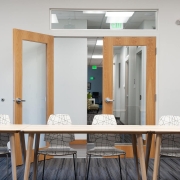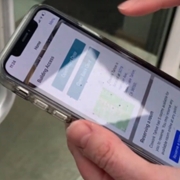Booking meeting rooms at coworking spaces
The ability to book a private meeting room on demand is a critical component in any coworking space. Ensuring that members can do this quickly, easily, and when they need it is as important as having the rooms at all.
For too long at Cowork Tahoe, we used paper sign-up sheets outside our meeting rooms for our members to reserve them. Yes, paper. It worked well enough, a member could walk up to the room they wanted and block out a time slot for a meeting later in the day, or even for right then if it wasn’t already being used. That is, if they remembered to have a pen in their hand.
However, it would cause problems when we inevitably forgot to post the new sheets up on time each week or if someone needed to book a room before they came into the office. It was a terrible member experience and our team spent far too much time helping members make reservations, printing out new sheets, and handling squatters
Sure, there are lots of technology solutions available to digitize room bookings, and we even tried one or two. We’ve since learned that technology isn’t automatically a better solution than an analog approach.
For example, having an online calendar that members can book doesn’t help someone running late if they have to go to their desktop or laptop first, log in, find a room, book the room, then go to the room.
Having tablets mounted outside each room with the ability to sign up can be powerful if they sync well with personal calendars, but are no better than paper and pencil if they don’t. And if the calendars they sync with still requires logging in through a website, you may as well not have the technology solution at all.
The ability to book a room with a few taps on a mobile phone has worked wonders at Cowork Tahoe. With our Jellyswitch app, members book their meeting rooms for the day or for the week while they are drinking coffee in the morning, or while they are walking up to the building. They book what they need when they need it & when they think of it. Not when they can get back to their desks.
My members get what they need without having to ask me. When they talk to me or someone else on my team, it can be about more than something they can’t get quickly on their own. We talk about their day, about their children, how their work in going. The conversations can be about human relationships rather than transactions because the transactions are easy to take care of on their own. That is meaningful.
That level of convenience and flexibility contributes to a much better experience. It means that the coworking space is supporting, not hindering their productivity. It is one more way to add value to their membership by removing a small friction.
It is also one more way for them to actively engage with our Cowork Tahoe brand. The frequency of engagement is multiple times a day. That builds brand recognition, trust, and through that, customer loyalty.
If coworking is about one thing, its flexibility. That applies to how meeting rooms are used as much as anything else. A mobile first approach is the best way to achieve the level of flexibility needed to provide a seamless meeting room experience.


